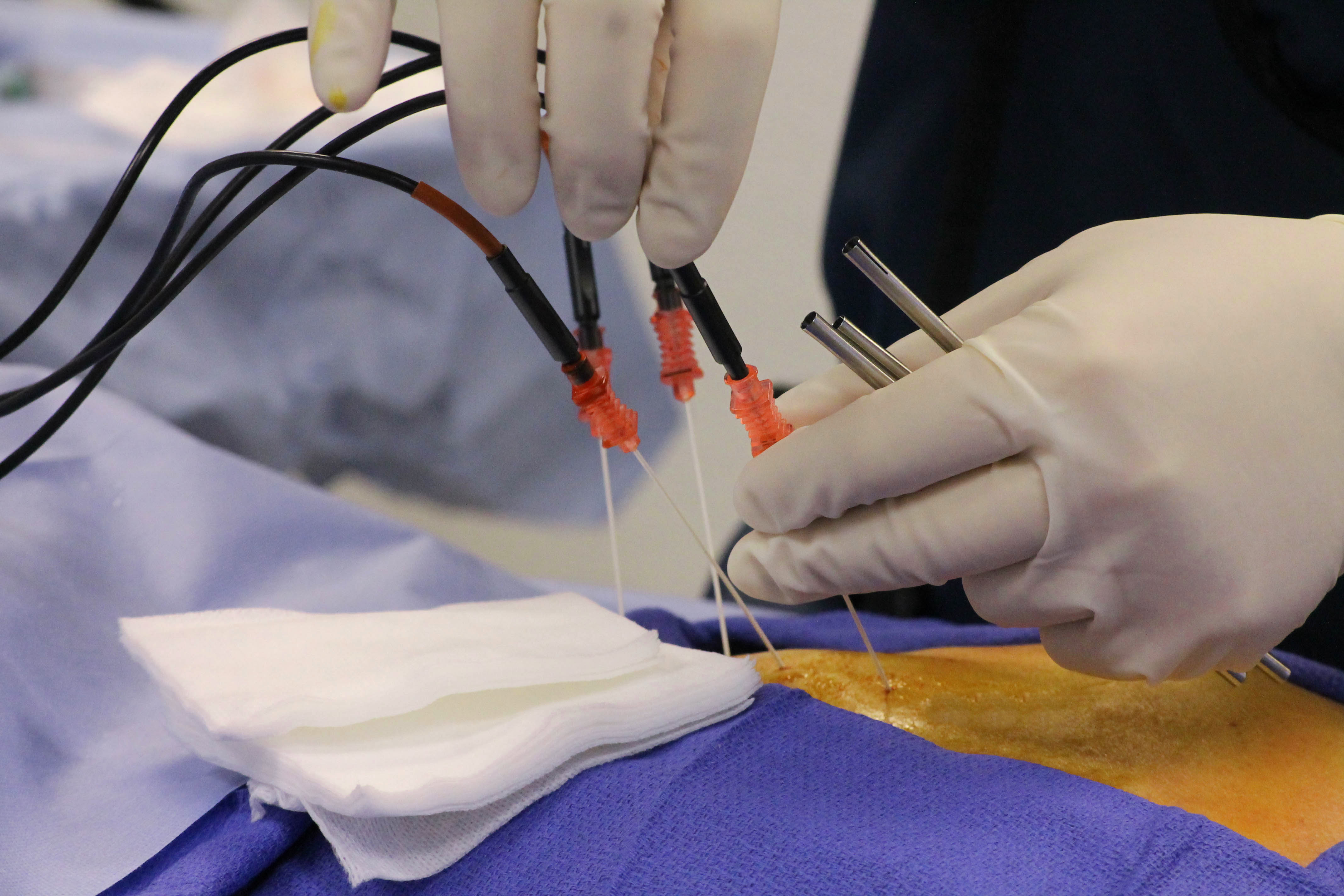Radiofrequency Ablation – Rhizotomy
Radiofrequency Ablation (otherwise known as Rhizotomy) is used to reduce pain by directly targeting the nerves that are sending pain signals. By targeting these nerves, symptoms should weaken without reducing nerve function.
It usually is known for directly targeting Facet Joint pain, which can cause lower back problems. Nerves (connected to the Facet Joint) sending pain signals to the spine can be the main cause of chronic pain.
It works by using heat to ablate abnormal regions of the body by running a current through nerve tissues that are causing the pain.
How does Radiofrequency Ablation work?

Normally before a Radiofrequency Ablation procedure, your doctor will want an MRI (Magnetic resonance imaging), Discography or a Nerve Block Injection performed to pinpoint exactly where the problem lay. The outcome of a Radiofrequency Ablation is typically long-lasting relief for anywhere from 6 months up to a year.
The Steps of a Radiofrequency Ablation are as follows:
- An IV line is given so a general anesthetic can be given to desensitize the nerves that are causing pain.
- The patient will be asked to lie with their stomach facing the ceiling
- Typically the physician will numb the area of the skin after using fluoroscopy to determine the direct root of the pain.
- Electric current will be sent through the needle – which is placed just outside the joint – to recreate the pain that is causing discomfort.
- Radiofrequency waves will be injected with the needle causing a heat lesion to disrupt nerve communications of pain.
- The procedure usually takes anywhere between 1-2 hours.
Benefits of Radiofrequency Ablation
A Radiofrequency Ablation procedure boasts several benefits and upsides since it’s a minimally invasive treatment that doesn’t cause undue stress and trauma to the body. In addition to this, other benefits include:
- The procedure takes only a few moments.
- Recovery time is typically minimal.
- You are not required to be put under anesthesia.
Side Effects of Radiofrequency Ablation
With any surgical procedure, there can be side effects. Common side effects for a Radiofrequency Ablation may include:
- Temporary pain at the injection site.
- Fever
- Dizziness
- Muscle weakness
- Numbing sensations
These side effects aren’t permanent and shouldn’t persist for any longer than a day. If they do, consult with your physician.

Talk the Pain Management Experts at Pegasus
If you feel this procedure may be right for you, or you would like to speak with our pain management doctors to discuss this or other pain treatment options, call Pegasus Pain Management at(214) 702-5855 or use our contact form to connect with us today.
